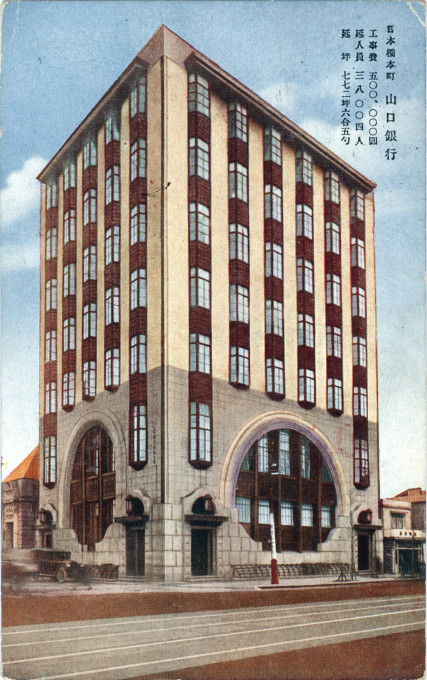“In feng shui [fusui, in Japan] every direction, such as north, south, or northeast has a number, color, element and a shape associated with it. Each shape has a distinct meaning. For instance, the tall, rectangular shape of wood is associated with growth. The shape associated with ‘big metal’ or the northwest is round. This is also the shape of coins – or ‘change’ – and wealth.”
– Red Lotus Letter, 2009
The Yamaguchi Bank history dates back to 1878 when its predecessor, the Hyakuju (110th) National Bank was founded in Shimonoseki, Japan. Its building in Tokyo, located on the western edge of the Nihonbashi financial district, was notable for the use of Japanese geomancy, fusui (“wind and water”) or hogaku (“direction and corner”); principally, the yoshinomado, a circular aperature with a flat bottom. Yamaguchi Bank merged with the Konoike and Sanjushi banks in 1933 to form the Sanwa Bank.
“In Zen Buddhism, the circle represents an innocent figure without any prejudices. This window expresses the final stage of spiritual enlightenment. In contrast, the rectangular window is named ‘the window of bewilderment’. That rectangle shape expresses a humans’ life. The four corners of the rectangle express four pains people cannot avoid in their lives: to be born, to get old, to get sick and to die.”
– Windows and Their Meanings in Japanese Architecture, Tsunagu Japan, 2014



